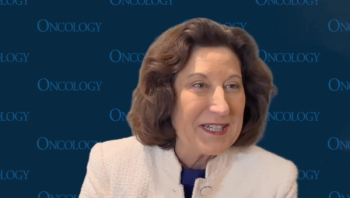
Benefits of Multi-Gene Panel Testing for Breast Cancer Risk
A multi-gene panel test provides better diagnostic yield compared with a limited BRCA1/2 genetic test for patients at risk for hereditary breast cancer.
A multi-gene panel test provides better diagnostic yield compared with a limited BRCA1/2 genetic test for patients at risk for hereditary breast cancer. This single reliable test provides more information for women suspected to have hereditary cancer predisposition, particularly for breast and ovarian cancers. These data were presented at a press briefing by Nimmi Kapoor, MD, a surgical oncologist at Breastlink Laguna Hills and Breastlink Orange in California, at the American Society of Breast Surgeons 16th Annual Meeting held in Orlando, Florida.
In a retrospective comparison of multiple genetic tests, there was no difference between the multi-gene panel test and the limited BRCA1/2 test in the detection of potentially harmful BRCA mutations. These newer, more comprehensive tests did not increase the rate of detecting genetic variants of uncertain significance-polymorphisms in the BRCA1 or BRCA2 genes for which there is not enough data to conclusively label as deleterious mutations.
“Patients at risk for hereditary cancer syndromes can benefit from upfront, more efficient, multi-gene panel testing without any sacrifice to BRCA testing capability,” said the study authors.
About one in 400 women have a deleterious mutation in the BRCA1 or BRCA2 genes that confers a risk for breast and ovarian cancers. These mutations, along with several others such as ATM and BARD1, are implicated in the 5% to 10% of breast cancer cases in the United States linked to hereditary mutations.
The genetic tests currently available mostly use next-generation sequencing to detect these mutations, which can be within exons, introns, and gene promoter regions. Most of these tests can also detect large deletions, sequence duplications, and complex gene rearrangements.
Until recently, Utah-based Myriad Genetics owned a patent on both the BRCA1 and BRCA2 genes, making it the only company or laboratory that could offer BRCA1/2 genetic testing. But, in 2013, the Supreme Court ruled that genes cannot be patented, invalidating the company’s patents. Since the court ruling, tests that compete with Myriad’s have cropped up, including the next-generation sequencing gene panel tests by Ambry Genetics and BROCA, a 50-gene panel developed by researchers at the University of Washington.
According to Kapoor, there have been concerns about the accuracy of the newer multi-gene tests, but the current analysis shows that there is no statistical difference between the panel test and the limited BRCA1/2 test in the detection of a deleterious BRCA mutation.
Kapoor and colleagues tested 966 patients between January 2008 and September 2014 at one of three locations of a single institution-337 had multi-gene panel testing (of 43 genes) and 629 had the limited BRCA1/2 test. Deleterious mutations in BRCA1 or BRCA2 were identified in 3.5% of the patients; there was no difference in the rate of BRCA1 or BRCA2 mutation detection between the two groups (4.0% vs 3.6% for the limited and panel tests, respectively; P = 1.0).
Four percent (39) of patients had a variant of unknown significance in either BRCA1 or BRCA2. The rate of detection was similar for both the limited and panel tests (4.0% vs 3.9%; P = 1.0).
A total of 14 patients (3.9%) who had panel testing were found to have a deleterious mutation in a different gene other than BRCA1 and BRCA2. Another 36 patients (10.1%) had a variant of unknown significance in one of these non-BRCA genes.
The most common non-BRCA mutated genes were CHEK2, PALB2, and ATM. The most frequently detected non-BRCA variant of unknown significance was in the ATM gene (11 patients; 3.1%).
“Doctors are the gatekeepers to genetic testing,” said Kapoor. “We have an obligation to help patients understand genetic risk and how testing can guide healthcare decisions.” She added that multi-gene panel testing can empower women with the understanding of their risk and can provide clinical information that could be used now or in the future to enhance knowledge of breast cancer biology and fuel the development of more effective treatments.
Newsletter
Stay up to date on recent advances in the multidisciplinary approach to cancer.
















































































